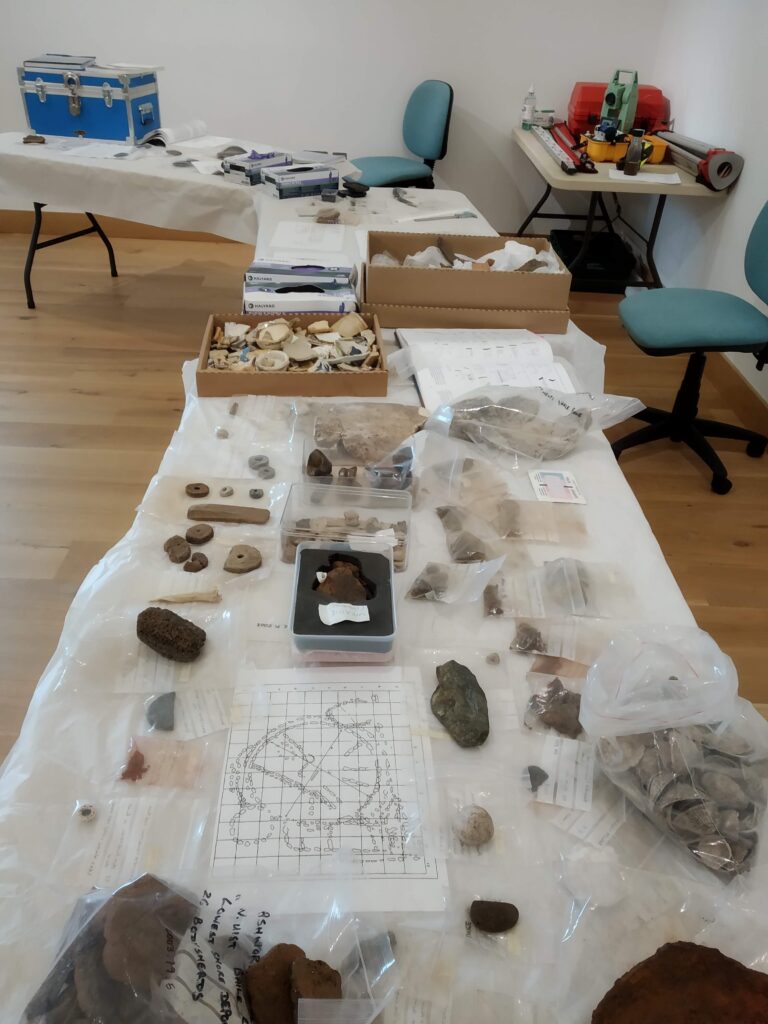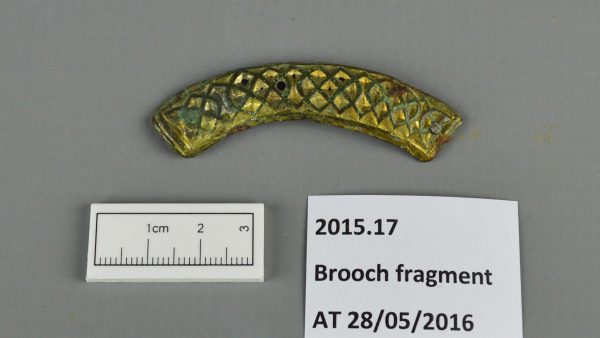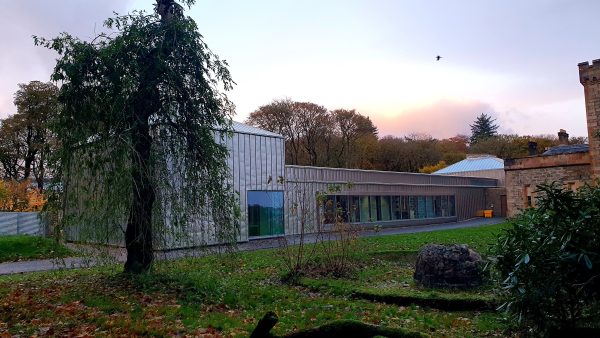
Archaeology Open Days at the museum
Update 4 on the Sònraichte Project by Samantha Ferrer, Project Officer
Thank you to all of you who came to the Sònraichte Project Open Days at the museum, where we had interesting chats about the project, archaeology, and the many objects we have in museum storage.
This article summarises some of the discussions we had, and the questions which interested people.
Not everything in the museum collection is on display. The collections on display represent just a tiny percentage of what’s preserved in our stores. However, most of this material is available for research and educational purposes. Knowing exactly what we have is the main objective of the Sònraichte Project. As the Project Collections Officer, I’m working with some of the archaeology collections to resolve legacy issues and bring our collections up to modern archaeology and museum standards, making them more accessible and increasing the knowledge that can be gained from them.

Many of you asked why is it important?
Good methods in archaeological practice are important. Archaeology is 3-dimensional: X and Y define space, and Z define time. We need to understand where objects are in place and in time. Archaeology is a discipline of identifying through contexts or layers and how they relate to each other in space and in time: which event comes first, and which event comes last, or what events are happening at the same time.
The diagram below illustrates how natural deposits are created through time, forming layers, and within those layers, there might be buried objects. Additionally, some events may occur through everyday activity: such as digging a hole to dump rubbish, or to build a wall, or even creating a burial. These events can be identified on the soil.

The process of excavation naturally means the destruction of the site and the archaeologist needs to record the layer sequence while digging. A context can be a deposit, a cut, or a structural feature. Each contains information about the nature of the site, its formation and decline, and it helps us reconstruct the site’s human occupation. Here’s an example of contexts and an associated matrix, from most recent to oldest.
By recording the layers during excavation and where the finds are located within them, we can gain an understanding of our past and how people engaged with each other and their environment. This is what makes us what we are today.
Didn’t know that! What do you have in the museum store?
Well, we brought you a glimpse of the archaeology collections, things ranging from the Mesolithic – when humans when hunter and gatherers before society had sedentary farming activities – up to the 20th century. The prehistory and history of the Western Isles.
One of the assemblages we brought for you came from an Iron Age Wheelhouse at Grimsay, North Uist, with a great selection of tools used during the first millennium. Objects ranging from bone awls, pottery spindle whorls, metal crucibles, bronze moulds, whalebone ‘chopping’ board, and many fragments of pottery!
The wheelhouse also comprised some later objects like spindle whorls made from steatite, a type of rock that you won’t find in the islands. The next place where they might come from is Shetland and Norway, so this material is telling us about Norse presence at the site! There are also later objects like a cast iron cauldron, which dates to the 18th-19th century. The excavation of this site tells us how the place has been used from Iron Age almost until today.

That’s fantastic! How can I play an active part?
We were able to show you how some of the finds we have at the museum were casual finds from members of the public. These finds were reported to Treasure Trove and allocated to the museum collections. We had some examples of Hebridean Ware, a type of Neolithic pottery typical from the Hebrides which dates to when people started farming around 5000 years ago. The pottery was found by chance and will help inform current research projects into this period. All thanks to people like you!
If you want to know more about how to report your finds via Treasure Trove, please see our previous ‘Sònraichte’ Project article.

Thank you for taking the time to come to our Open Day to celebrate archaeology with us. Please look out for further Archaeology Open Days in the future. Finally, thank you to everyone who brought in interesting objects to show us!
This article was originally posted on our blog 17/9/21
The ‘Sònraichte’ Project was funded by Museums Galleries Scotland.



